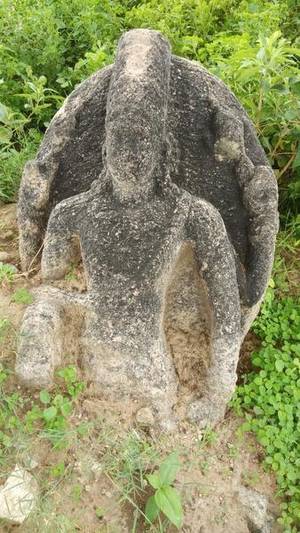1,200-Year-Old Sculpture Unearthed in Southern India
The Hindu reports that an eighth-century A.D. sculpture of Lord Vishnu, one of the principal Hindu deities.
M. Maruthu Pandiyan of the Madurai Government Museum said the style of the sculpture corresponds to the Pandya dynasty, a Tamil-speaking group that ruled in South India and Sri Lanka as early as the fourth century B.C.
An eight century Common Era (CE) sculpture of Lord Vishnu, belonging to the Pandya period, was found at the western bank of the Gundaru river at Ulagani village of Kallikudi block in southern India by a team of researchers from Madurai Kamaraj University.
Madurai Government Museum Curator M. Maruthu Pandiyan and Udhayakumar, a researcher, checked the sculpture based on the information provided by Kannan, a Tamil student of a college affiliated to Madurai Kamaraj University, and Sangaiah, a professor from the college.
Mr. Maruthu Pandiyan said the features of the sculpture indicated that it belongs to the Pandya period. “Mainly, the sacred thread of the sculpture goes above the right forearm and a broad ‘kanthi’ (necklet) studded with big gems adorns the neck.
Similar sculptures of the Pandya period have been found in various places such as Thirumalapuram, Tirupparankundram, and Sevalpatti,” he said.
The sculpture has four hands. Among them, two arms are held up vertically. The right arm has a broken chakra and in the left arm a conch. “The chakra and conch are the main features of the Pandya period,” said Mr. Maruthu Pandiyan.

The village has also been mentioned in a book about the inscriptions of the Madurai district, which was released by the State Archaeology Department.
The book mentions that this village had an old name, ‘Kulasegara chathurvethimangalam or Ulagunimangalam.”
Also, a 13th-century Pandya inscription mentioned that the local village administrators had levied a special tax called ‘pasipaattam’ tax (a tax on fishing) for the renovation of the tank.





